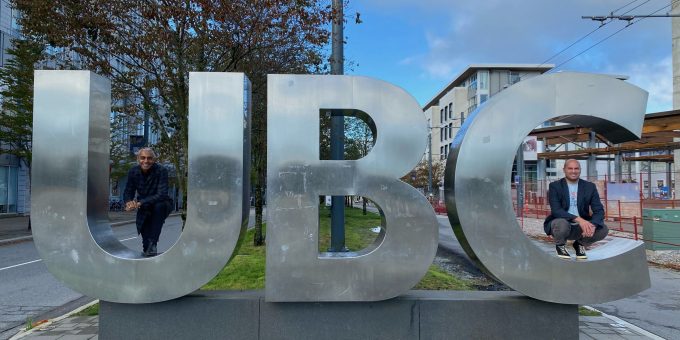
Courtesy Colter Uscola
Letter from the Editors: Fall 2023
With autumn upon us, here in Vancouver we are surrounded by the spectacle of color. Fittingly, our final issue of 2023, Living in Color, embraces the spectrum of possibilities that color brings to our lives. Colors can signify distinctions, like safety or danger, warmth or coolness, and they can evoke feelings and moods. Indeed, color plays an essential role in the creation and enactment of culture in everyday life, dotting the social landscape with hues of food and dress, music and dance, ritual and play.
Our first feature essay puts an exclamation point on the issue’s bright color palette by centering an emerging impulse to study the experiences of joy among minority groups. Too often, the script in both popular culture and in our home discipline of sociology revolves around prejudice and discrimination as faced, for example, by trans people. But to prioritize pain, and pain alone, is to flatten lives that are also undeniably colorful. And so, we miss out on what makes us fully human. Flipping the narrative on its head, Laurel Westbrook and stef m. shuster explore the ways that joy permeates trans existence, offering respite, building resilience, and fueling resistance.
In this issue, we also feature Gary Alan Fine and Fiona Greenland on the world of color itself, directly. From Vantablack (“the world’s blackest black”) to International Klein Blue and UPS’s signature Pullman Brown, we are surrounded by colors so full of meaning and value, so covetable that people and corporations seek to possess them, own them, and even monopolize them. What does it mean, the authors ask, to apply trademarks and licensing agreements to tints and shades?Another group of authors changes direction by asking what happens when color makes things not manifest but invisible. In a provocative feature, we learn about the erasure of Black bodies in medicine—and its dire consequences: the majority of skin cancers detected on people with darker skin are recognized only at advanced stages. In a world where doctors are trained on and attuned to lighter skin in their pedagogy and practice, to live in a black-or-white world can be a deadly proposition.
Like the transformation of a sea of verdant green into an autumnal collage of oranges and yellows, each page of this exuberant issue brings into view exciting new vistas. Our authors take us from red-light districts to the brains-and-brawn subculture of chess-boxing, from incarceration and education to the complex political interplay between nativism and liberalism—and from here, all the way through to machine learning and artificial intelligence. Along the way, we’ll treat you to the largest collection of “In Briefs” (our snapshots of current research) that we’ve ever published, and you will meet two extraordinary journalists, thought leaders from around the world whose work shines in living color.
By tradition, Fall is also a moment for reflection and gratitude. As we close the first volume of our editorial tenure, we want to take a moment to tell you, our sociology community, how much we’ve enjoyed working with you all, from pitch to finished product. We have marveled at the curatorial selections of our section editors, and our brilliant team of graduate students (now featuring close collaborative networks between Canadian and American universities) bring us great joy from one day to the next. And then there’s our word-wizard Letta Page who has worked tirelessly—and with considerable flair—to ensure that Contexts brings the best of sociology to the public. We all work together to produce a beautiful magazine, of course, but also to transcend its glossy pages and ensure that our discipline remains vibrant and vital in expansive ways: do check out our blog posts, video interviews, and our presence on virtually every social media platform. There is never a monochromatic day at Contexts!
Seth Abrutyn and Amin Ghaziani
University of British Columbia
